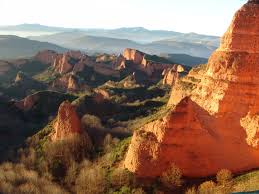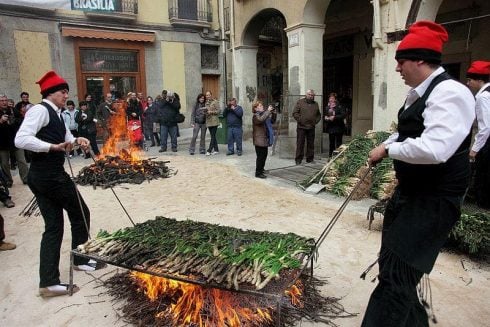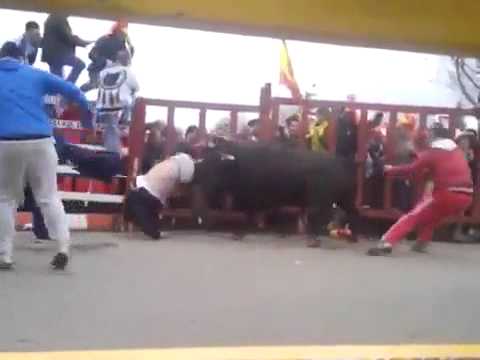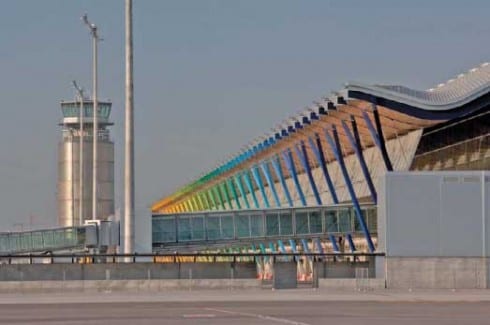WITH headlines predicting climate change doom, we often assume that we are the first generation to face these drastic, possibly deadly, environmental challenges.

Climate change – caused by fossil fuels and greenhouse gases – is an undeniable problem in the 21st century.
However, we are not the first generation to experience, or exert, a massive human influence on nature. One of the first examples of large scale ‘human-caused environmental degradation’ happened here in Spain.
The impact of mining by the Romans in the 1st century AD gives a glimpse into what some believe was one of the first ‘human-caused’ ecological disasters.
The Romans in Spain used extensive gold mining to stabilise the value of their monetary system. In what is now Leon and Asturias, rich gold deposits were exploited on a massive scale.
For more than two centuries, Spain was the ‘El Dorado’ of the Roman world. The Las Medulas site was the largest mining project in the entire Roman Empire and used an early form of hydraulic power.
Galleries, or shafts, were cut over the strata of the precious mineral deposits below. Using a complex aquatic system, huge quantities of water flowed into the galleries which were then closed at both ends.
The resulting pressure caused the rock to explode. It was then washed away by the water flow forming enormous areas of tailings, sometimes several kilometers in length.
Whole hillsides were exploded and destroyed. The main opencast pit – about 2.5km wide and 100-200m deep – was the largest ‘pre-industrial constructed hole’ on the planet.
An estimated 300 million tonnes of earth were despoiled, yielding 90 tonnes of precious gold. The soil in the mining operation was so eroded that landslides, soil degradation and massive sluice areas remain widespread today.
As noted in The Olive Press issue 201, new laser systems attached to aircraft have shown that Las Medulas mining operation extended further than is visible at ground level.
This technology shows that a more complex and extensive hydraulic system existed.
Also data from practices like high resolution pollen surveys, peat-core samples and forest resilience records bring new evidence to suggest the full impact of the Las Medulas mining operation.
Ice core data taken from the Greenland polar caps suggests that mineral air-pollution from this mine peaked during the Roman period in Spain – at levels not reached again until the Industrial Revolution some 1,700 years later.
Las Medulas was controversially crowned a UNESCO World Heritage Site in 1997. The delegate from Thailand opposed the designation because he considered the site “a result of human destructive activities which was harmful to the noble cause of environmental promotion and protection.”
Delegates from Germany and Finland agreed with his position.
The lunar landscape around Ponferrada is a fascinating area of strange land-forms that also offers great hiking and scenery.
More importantly, Las Medulas also tells a familiar ecological story: that of a human culture radically impacting the environment.
It is the record of how the Romans managed (or mismanaged) their surroundings – and we may do well to take a lesson from history.












nice article Jack!
As an anthropologist I teach an undergraduate course in human ecology here at the University of Louisiana at Lafayette, and I have been using the case study of Las Medulas for years. It provides an excellent example of how human activity has been impacting the environment over the past millennia. This is precisely why we need to preserve Las Medulas as a UNESCO World Heritage Site- in order to preserve the evidence of human hubris and atrocities like the Nazi death camps of WWII.
The lunar landscape around Ponferrado is not interesting, it’s depressing but it is does supply most of Europe’s slate.
I’m surprised that NW Spain is used as an example of climate change when Andalucia/Murcia and the centre regions would have made a much better case.
In Guadix the river used to flow all year but nowadays you may see a little water in it maybe once a year, why? Because of the massive and almost wholesale destruction of the once un-interrrupted oak forests that used to cover most of Spain. Nothing to do with the Romans but everything to do with the Christian reconquest of Al-Andaluz.
Found your article on Las Medulas fascinating. Have you been to the Rio Tinto copper mines near Huelva? Another area where Roman mining was carried out and there is an excellent museum in the town, housed in the old company hospital. Also a tourist railway which is steam-hauled on occasion. I am a regular contributor to the Model Engineer magazine in the uk and have written a short series which I could send to you if you are interested. Living in Casarabonela, the RT area is a bit more accessible than Galicia! And I’ve been there three times so far.
Regards